You can’t see it, but a large portion of the world’s freshwater lies underground. It may all start as precipitation, but through infiltration and seepage, water soaks into the ground in vast amounts. Water in the ground keeps all plant life alive and serves peoples’ needs, too. What is a natural spring?
A natural spring is an H2O source where groundwater emerges at the Earth’s surface. It results from the saturation of permeable rocks, allowing water to flow naturally. Springs often play vital roles in ecosystems, providing freshwater and creating unique habitats.
3 Types:
Perennial
Intermittent
Periodic
These Natural Springs range in size from small intermittent seeps, which flow only after a lot of rainwater falls, to huge pools flowing hundreds of millions of gallons every day.
What is a Natural Spring
If you think you have an underground spring, get a shovel and start investigating. Look for wet spots and use your shovel to scrape away a small amount of the muddy soil. Watch to see if water seeps back into that spot. If it does, that’s a surefire sign you have an underground spring.
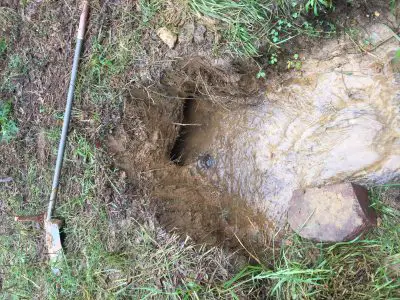
Watching animals, birds, snakes, and insect activity is another good way to find a spring. They tend to converge on sources of water coming from a bottom side area of a hill, mountains, or low-lying crevice where there will be a noticeable muddy, soggy ground with a heavy growth of green weeds or grass.
A natural Spring can be used to accommodate a wide variety of needs for anybody growing food homesteading raising animals or off-grid and needing a drinking water source. A natural spring should produce at least 6 gallons per minute just like a water well is capable of being considered sufficient.
Spring water is also abundant in healthy minerals such as silica, magnesium, and calcium and contains healthy microbes and probiotics. However, some springs are unfortunately contaminated due to manmade reasons, so it is very important to make sure to test the spring before drinking from it. Minerals become dissolved in the water as it moves through the underground rocks. This mineral content is measured as total dissolved solids (TDS).
A spring occurs when groundwater appears on the land surface. A Spring occurs in various forms and is classified by the rock type in which the spring occurs, how the spring was formed, how much water flows from the spring, the temperature of the water, and if the water flow varies from season to season. Some springs may fall into more than one classification.
Spring Water Resources
Spring water resources refer to natural sources of water that originate from underground aquifers and flow to the surface naturally. These resources include springs, where groundwater emerges, providing a continuous supply of fresh water. People often tap into spring water for drinking purposes, as it is typically considered clean and free from contaminants.
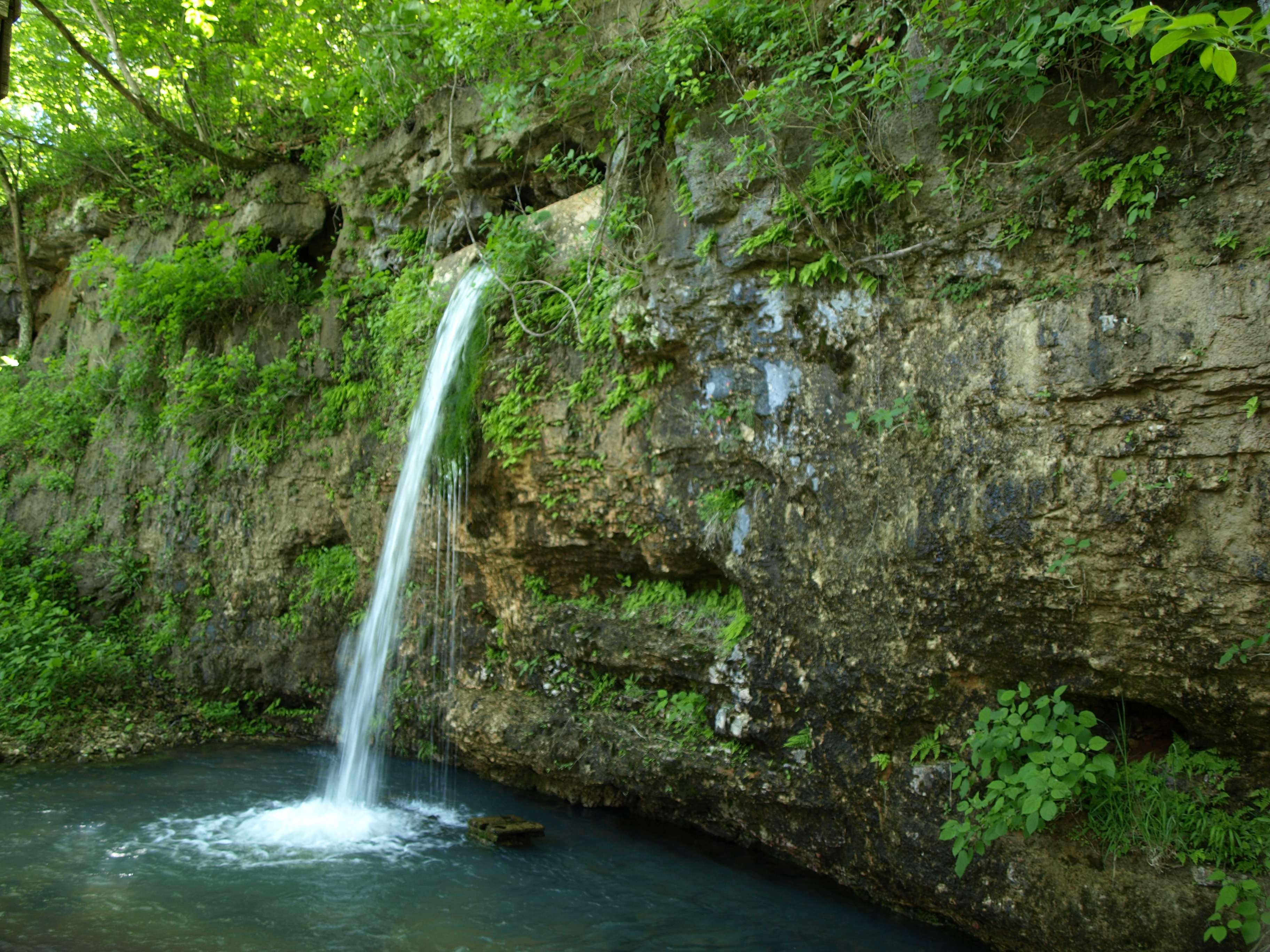
Bottled spring water is also a common commercial product sourced from natural springs, emphasizing purity and natural mineral content.
This may give the water flavor and even carbon dioxide bubbles, depending on the type of geology through which it flows. This is why spring water is often bottled and found in the supermarket as mineral water.
Springs are pushed out onto the earth’s surface by several natural forces, such as gravity and hydrostatic pressure. A spring produced by the emergence of geothermally heated groundwater is known as a hot spring. The yield of spring water varies widely from a volumetric flow rate of nearly zero to more than 14,000 liters per second (490 cu ft/s) for the biggest springs.
When the water table is high and the aquifer is near to the surface the groundwater pushes up to the surface and pops out as spring water, usually along hillsides, low-lying areas, or at the base of slopes.
Streams, headwaters, and streams that flow only part of the year provide many upstream and downstream benefits. They protect against floods, filter pollutants, recycle potentially harmful nutrients, and provide healthy food and habitat for many types of fish.
These streams also play a critical role in maintaining the quality and supply of our drinking water, ensuring a continual flow of water to surface waters and helping recharge the underground aquifer.
Headwater streams and streams that only spring water flow for part of the year make up the majority of river miles in the United States. About 53 percent of the total stream miles in the continental U.S. are headwater streams.
Almost 60 percent of stream miles in the continental U.S. only flow seasonally or after storms. The very foundation of our nation’s great rivers is a vast network of unknown, unnamed, and underappreciated streams. Flow in a headwater may be year-round, seasonal, or rain-dependent.
Small streams, including those that don’t flow all of the time, make up the majority of the country’s waters. They could be a drizzle of snowmelt that runs down a mountainside crease, a small spring-fed pond, or a depression in the ground that fills with water after every rain and overflows into the creek below.
These water sources, which scientists refer to as headwater streams, are often unnamed and rarely appear on maps. Yet the water quality of small streams is critical to the health of the entire river network and downstream communities. These small streams often appear insignificant, but in fact are very important, as they feed into and create our big rivers.
Springs fall into three general classifications:
- Perennial springs -that flow constantly during the year
- Intermittent-temporary springs that are active after rainfall, or during certain seasonal changes
- Periodic geysers-that vent and erupt at regular or irregular intervals
Intermittent Spring temporary springs that are active after rainfall, or during certain seasonal changes- Runoff from rainfall or other precipitation supplement the flow of the seasonal stream. During dry periods, seasonal streams may not have flowing surface water. Larger seasonal streams are more common in dry areas.
A Perennial Spring is a water source that flows continuously throughout the year, regardless of the season. Unlike seasonal or intermittent springs, which may dry up during certain periods, perennial springs maintain a consistent flow. These springs are often fed by underground aquifers or sources that provide a continuous supply of water. Perennial springs play a crucial role in sustaining ecosystems, providing a reliable water source for plants, animals, and human communities.
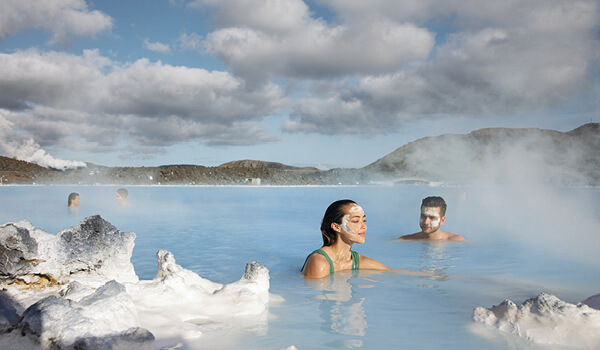
Geyser Spring– are hot springs that intermittently erupt columns of hot water and steam into the air. The term “periodic geysers” refers to geysers that erupt at regular intervals, meaning they have a predictable pattern of activity. The intervals between eruptions can vary from minutes to days or even longer.
One well-known example of a periodic geyser is the Old Faithful geyser in Yellowstone National Park in the United States. Old Faithful erupts approximately every 90 minutes, making it a popular attraction for visitors.
The periodicity of geysers is influenced by various factors, including the depth of the geyser’s plumbing system, the temperature of the water, and the pressure exerted by the steam.
Geysers provide a fascinating natural spectacle and offer insights into the geothermal activity occurring beneath the Earth’s surface.
- Periodic geysers-that vent and erupt at regular or irregular intervals-natural Geysers are features that erupt liquid water and steam at boiling temperatures. And, by definition, things we call geysers erupt either periodically or episodically. The difference is that periodically means regularly. Episodically means that the time between eruptions is not always the same.
- Rain-dependent streams (ephemeral) flow only after precipitation. Runoff from rainfall is the primary source of water for these streams. Like seasonal streams, they can be found anywhere but are most prevalent in arid areas.
- Ephemeral stream ephemeral stream has flowing water only during, and for a short duration after, precipitation events in a typical year. Ephemeral stream beds are located above the water table year-round. Groundwater is not a source of water for the stream.
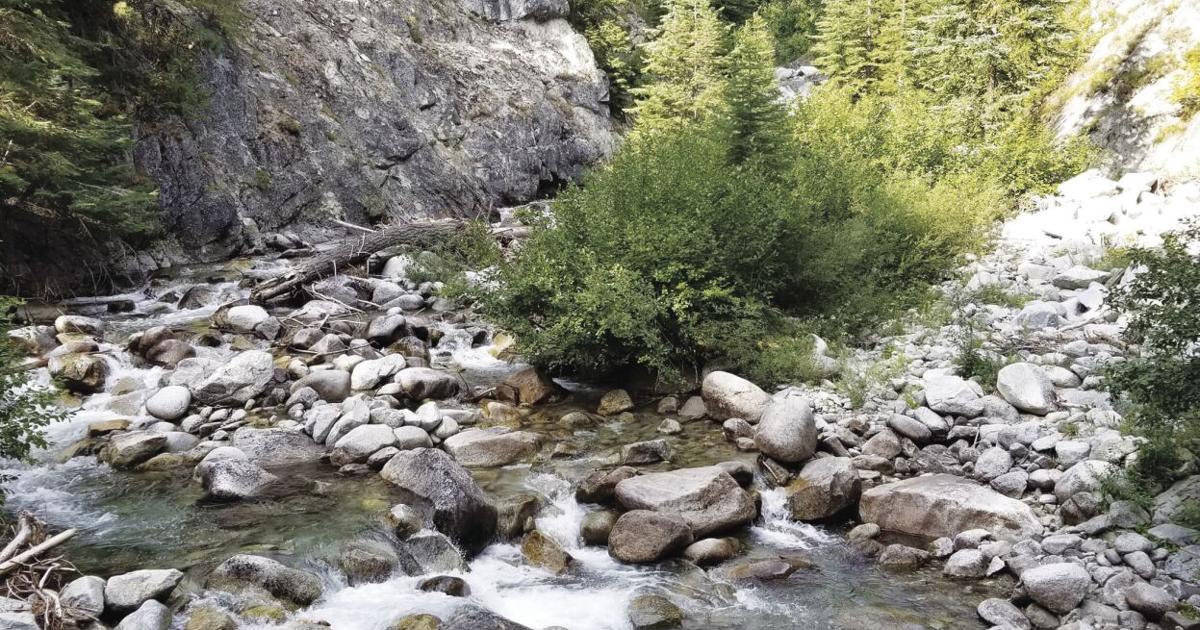
Natural Springs are often classified by the volume of the water they discharge.
The largest springs are called “first-magnitude”, meaning springs that discharge water at a rate of at least 2800 liters or 100 cubic feet of water per second would be about 737 gallons per second.
Natural Springs are also often classified by the volume of the water they discharge.
The largest springs are called “first-magnitude”, meaning springs that discharge water at a rate of at least 2800 liters or 100 cubic feet of water per second would be about 737 gallons per second.
- Gravity Springs: These springs occur when groundwater is discharged naturally due to the force of gravity. Water from an aquifer flows to the surface because of the slope of the terrain. Gravity springs are common in hilly or mountainous areas.
- Artesian Springs: Artesian springs happen when water from a confined aquifer is under pressure, causing it to rise to the surface without any external pumping. This occurs when the aquifer is trapped between impermeable layers, creating artesian pressure that forces water upward.
- Fracture Springs: Fracture springs emerge where there are fractures or faults in rocks, allowing water to move through these openings and reach the surface. The flow of water in fracture springs is influenced by the geology of the area and the presence of fractures that create pathways for groundwater movement.
Types of Natural Springs
There are several types of natural springs, each characterized by the way water emerges from the ground and the geological processes that contribute to their formation. Here are some common types of natural springs:
- Artisan Springs: Also known as flowing wells, artisan springs occur when water naturally rises to the surface due to underground pressure. These springs often flow continuously.
- Fault Springs: Fault springs result from the movement of geological faults. When water encounters a fault line, it can be forced to the surface, creating a fault spring.
- Limestone Springs: Limestone springs occur in areas with limestone bedrock. The water dissolves the limestone, creating underground channels through which it flows before emerging as a spring.
- Karst Springs: Karst springs are associated with karst topography, where soluble rocks like limestone, gypsum, or dolomite create distinctive landscapes. These springs often form in sinkholes or caves.
- Artesian Springs: Artesian springs occur when water from a confined aquifer is under pressure, causing it to rise to the surface without the need for pumping. The pressure is typically due to the elevation difference between the recharge area and the spring outlet.
- Hot Springs: Hot springs release water that is significantly warmer than the surrounding air temperature. These springs are often associated with geothermal activity, where underground heat sources warm the water.
- Cold Springs: In contrast to hot springs, cold springs release water that is cooler than the surrounding air temperature. They can be found in various geological settings.
- Intermittent Springs: Intermittent springs, also known as periodic springs, have a fluctuating flow. They may stop flowing for a period and then start again due to variations in underground water pressure.
- Fossil Springs: Fossil springs release water that has been underground for an extended period, sometimes for thousands of years. The water may have percolated slowly through the porous rock before emerging.
These are just a few examples, and various factors such as geology, climate, and local hydrology contribute to the diversity of natural springs. The United States Geological Service has a unique way to locate Springs and Groundwater USGS has an Interactive Map that can locate Springs and other water sources if they are listed in their large database.
Why are Some Springs Hot
Some springs are hot due to geothermal activity, which involves the heat emanating from the Earth’s interior. The heat is generated by the decay of radioactive elements and the residual heat from the planet’s formation. Here are the main reasons why some springs are hot:
- Geothermal Heat: Hot springs are often associated with regions where the Earth’s crust is thin, allowing heat from the interior to reach the surface. The water in these springs is heated by contact with rocks deep within the Earth.
- Volcanic Activity: Hot springs are commonly found in volcanic areas. In these regions, magma beneath the Earth’s surface can heat surrounding rocks and water. When the heated water finds a pathway to the surface, it emerges as a hot spring.
- Faults and Fractures: Geological faults and fractures can create conduits for water to travel deep within the Earth. As the water moves through these pathways, it comes into contact with hot rocks, absorbing their heat and subsequently surfacing as a hot spring.
- Subsurface Pressurized Systems: Some hot springs are part of subsurface pressurized systems where water is confined and pressurized by impermeable rock layers. When this pressurized water reaches the surface, it can release heat, resulting in a hot spring.
- Deep Circulation: Water may circulate deep within the Earth’s crust, reaching high temperatures before returning to the surface through a hot spring. This deep circulation is often associated with tectonic activity.
- Localized Heating: In certain cases, hot springs can be the result of localized heating of groundwater due to specific geological conditions. This might include the presence of thermal gradients in the Earth’s crust.
It’s important to note that not all hot springs have the same temperature, and the degree of heat can vary. Some hot springs are hot enough to be used for bathing or even geothermal energy production, while others may be only slightly warmer than the surrounding environment. Examples of famous hot springs include the ones in Yellowstone National Park in the United States, the Blue Lagoon in Iceland, and the geothermal areas in New Zealand.
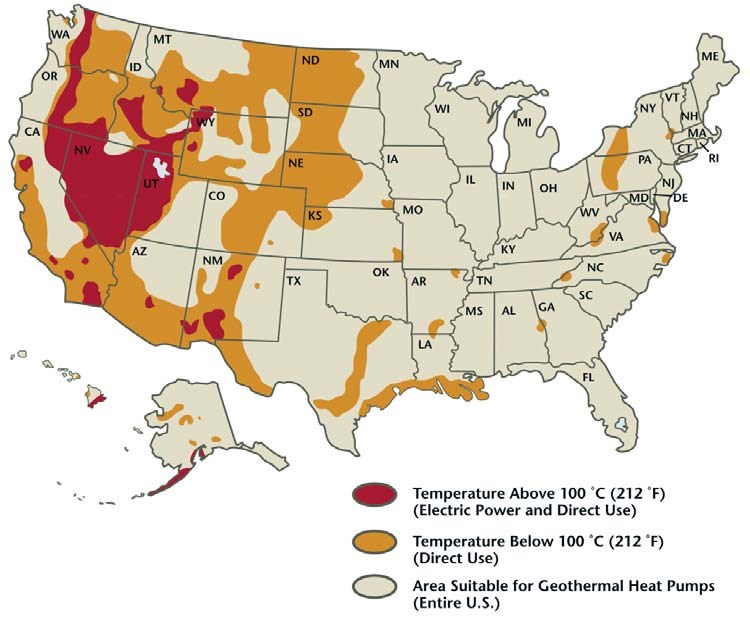
Map showing estimated subsurface temperatures in the United States. Red and orange colors indicate that the western US is generally warmer than the central or eastern US. Most hydrothermal systems can be expected to occur in the red and orange areas.
The source of heat is either magma, in the case of volcano-related systems, or heat from the normal temperature increases with depth in the earth. Fractures in rocks often create permeability, but in some systems interconnected pores or large cave systems allow fluids to flow. In hydrothermal systems, seismic activity may open fractures or alternatively may close them.
How Do You Find a Natural Spring?
- Look for Springs in hilly, higher places
- Areas of lusher Brush/grass
- Wet muddy spots
- Signs of worms, snakes, insects, or birds
- Melt spots in the snow
- Look for water coming out of the ground and flowing away from the spot where it emerges.
- Use Dowsing Rods
- Dig a small hole and see how long it.…………………………………………………………………………………………Read more

References:
National Park Service-Hot Springs/Geothermal Features
FAQ’s
Why is the water in some springs hot? Hot springs are usually the result of geothermal activity, where water is heated by the Earth’s internal heat before reaching the surface.
Are all springs constant in their flow? No, some springs have a constant flow, while others, known as intermittent springs, have a fluctuating flow that can stop and start periodically.
What role do springs play in ecosystems? Springs provide essential water sources for plants, animals, and human communities. They contribute to the overall health and balance of ecosystems.
Can you drink water from natural springs? While some springs provide clean and safe drinking water, it’s important to be cautious as water quality can vary. In certain areas, springs may be contaminated, so it’s advisable to have the water tested before consumption.
Where are some famous natural springs located? Examples include the Blue Spring in Florida, USA; Banff Upper Hot Springs in Canada; and Pamukkale in Turkey, known for its terraces of carbonate minerals.
